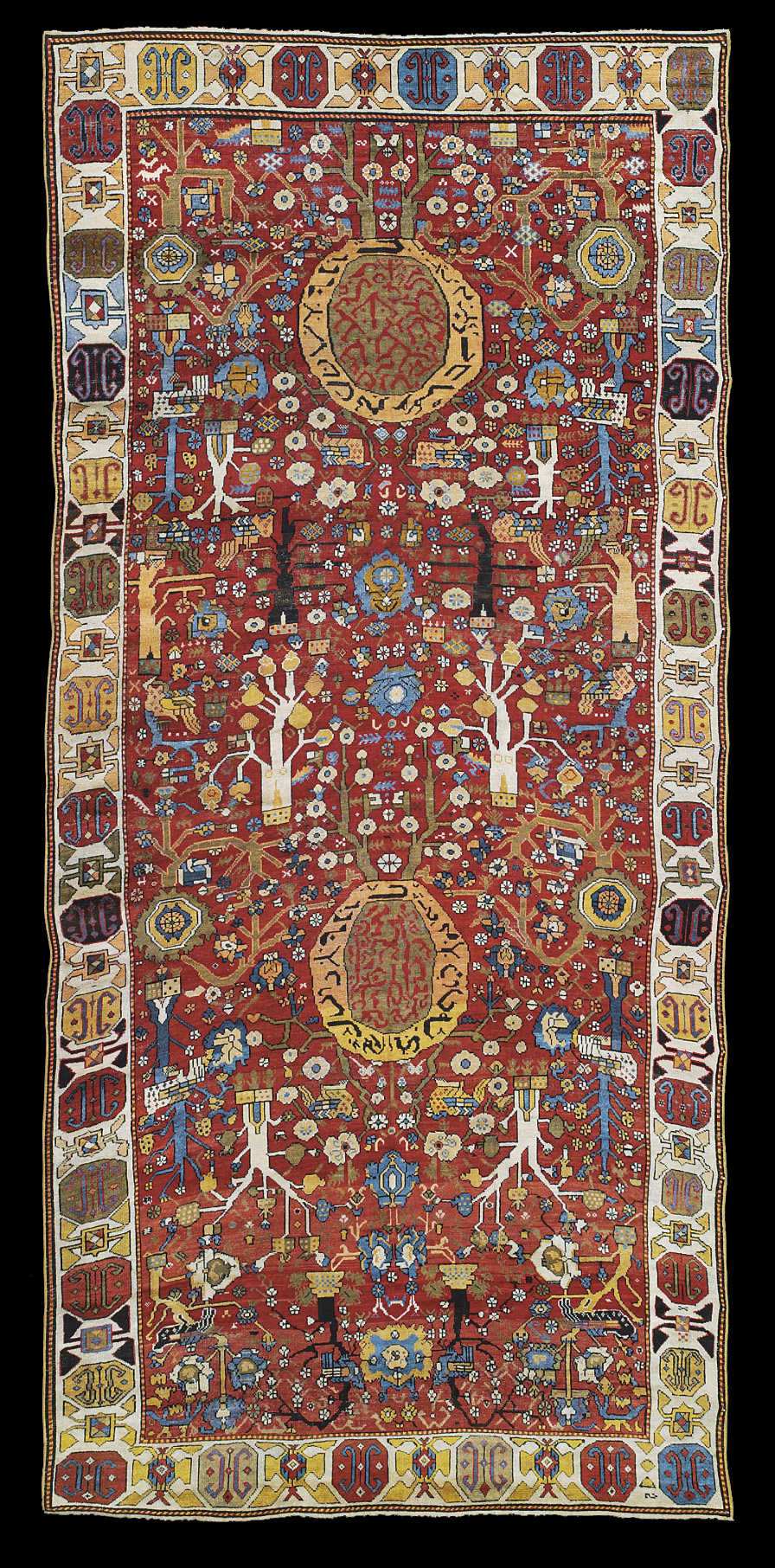|
Early Azerbaijan
"Garden" rug, Shirvan or Iranian Azerbaijan, 1800.
A NORTH WEST PERSIAN KELLEH
CIRCA 1800
Price Realized £42,050 ($67,701)
Sale Information
Christie's
SALE 7960 —
ORIENTAL RUGS AND CARPETS INCLUDING TURKMEN WEAVINGS FROM
THE COLLECTION OF ERIK RISMAN
5 April 2011
London, King Street
Lot Description
A NORTH WEST PERSIAN KELLEH
CIRCA 1800
Overall light wear, some repiling, selvages replaced, ends rebuilt
16ft.9in. x 7ft.6in. (510cm. x 228cm.)
Lot Notes
The design of
this kelleh derives from carpets which are generally attributed to either
North West Persia or the Azerbaijan region of the Caucasus.
One example is
discussed by Ulrich Schürmann, (Schürman, Caucasian Rugs, Munich, 1961,
pp.58-59, pl.2), while another was in these Rooms 10 October 2008, lot
41.) Both those rugs are clearer drawn than the present example, each on a
green field, but the elements of the design are clearly held in common,
with the paired trees and the central roundels. At first glance both those
rugs appear to have been woven in the same border region of North West
Persia if it were not for the inclusion of the lyre motif in the border of
the Schürmann example, which is characteristically of Caucasian origin
(see Schürmann, op. cit., p.67, pl.6).
Another related example,
attributed to Azerbaijan, is discussed by Eberhart Herrmann, (Asiatische
Teppich- und Textilkunst, 3, Munich 1991, pp.50-51, pl.21). That has more
in common with our rug, a development from the more restrained earlier
rugs, although that has considerably brighter more primary colours than
those found here, and the design is further removed from ours than the two
green ground examples.
This is a wonderfully idiosyncratic rug, with
an enthusiasm and vitality to the drawing, even while the weaver patently
does not fully understand the original derivation of the design she is so
carefully weaving.
|

